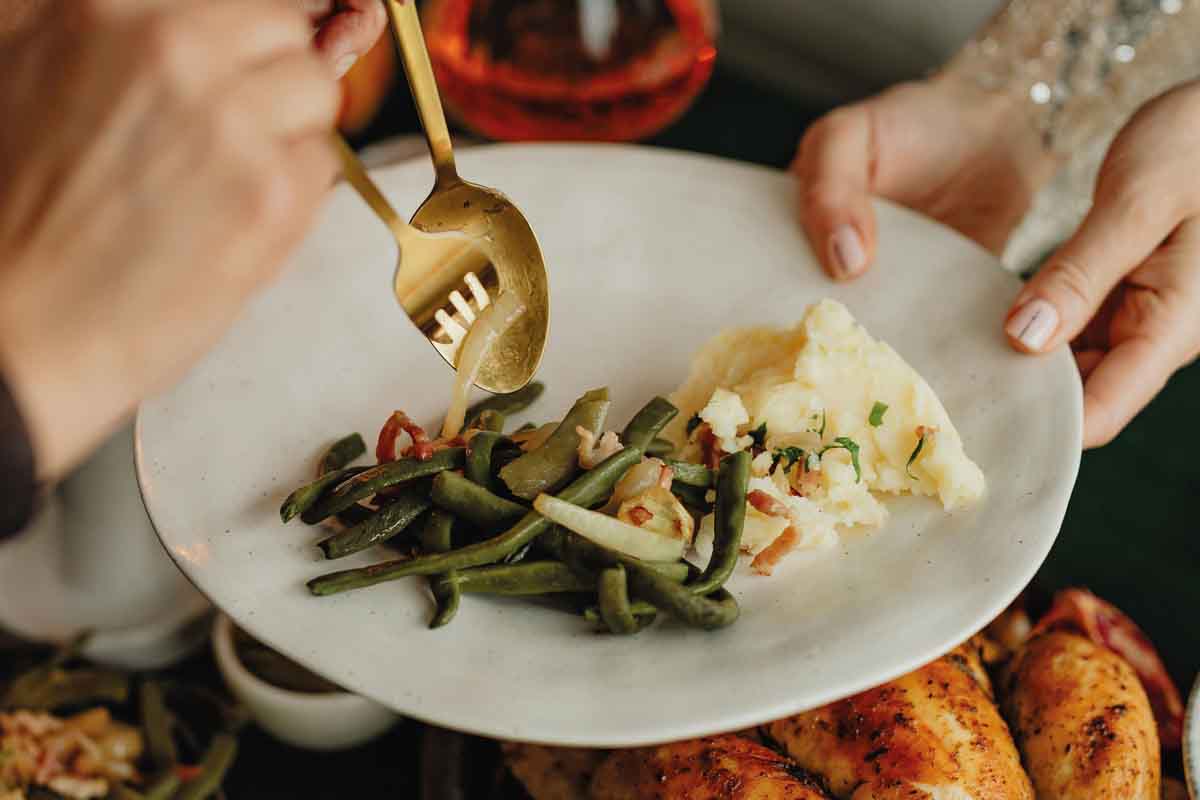
Well-stocked pantries, platters piled high, feasts that leave no one wanting … As the holidays approach, many of us experience a heightened sense of the deeply rooted connections between abundance and well-being. Not only does plentiful food ensure our physical survival, it also helps cement personal relationships—arguably the raison d’être of our festive gatherings.
Inspiration from abroad
US isn’t the worst global offender when it comes to food waste, but several economically similar countries are doing better. According to the 2024 UN’s Food Waste Index Report, households waste 160 lbs of food per person in the US, compared to 135 lbs in New Zealand and Sweden and just 132 lbs in Japan.
AdvertisementJapan has been especially successful in reducing its household food waste through a combination of public education, targeted regulation, and waste-tracking technologies (for example, smart fridges capable of monitoring the freshness of stored foods and making strategic meal recommendations!).
A nurturing impulse on overdrive
In a world where social and economic forces pressure us to buy much more than we need, our desire for security and connection can easily lead to over-stocking and over-cooking. If our supply of holiday leftovers then exceeds our appetite, energy, or freezer capacity, chances are high that food will end up in the compost—or, worse, the landfill.
The downside of abundance
USDA estimates that 30 to 40 percent of food supply in the US is wasted. Food waste contributes to greenhouse gas emissions and corresponds to a significant (and preventable) waste of energy, resources, and money.
While spoiled food isn’t the kind of vision we want dancing in our heads over the holidays, we can nevertheless use our awareness of the problem to make choices that will nurture both our loved ones and the environment.
’Tis the season all over again
Are mid-winter doldrums likely to get you down? Freeze all your holiday leftovers, then bring them out for a second celebration in late January.
Planning tips for a low-waste holiday
Estimate realistically
Instead of guessing and rounding up, take a moment to figure out how much food you’ll need. Alternatively, consult an online portion calculator such as Save the Food and/or the many practical suggestions at Love Food Hate Waste.
Take stock before you shop
Check your fridge and pantry, then make shopping lists and menu plans based on what you already have. Organizing this way will help you avoid duplicate purchases and take advantage of such things as forgotten veggies in the freezer or partly used containers of baking ingredients.
Time it right
In the weeks before the holidays, use up aging food to make room in your fridge and cupboards. When shopping for big holiday meals, save the most perishable items for last.
Smart serving
The way we serve food can make a difference.
- For multi-dish meals, allow guests to serve themselves—a format that increases the likelihood of people getting only what they’ll eat on their plate.
- Consider reducing the number of separate dishes you serve and focusing on one “showstopper” creation (think timpano or vegetarian koulibiac).
- Prevent food spoilage by making sure perishables are cleared from the table and safely stored within two hours (one hour, if the ambient temperature is above 32 C/90 F.)
- If your company includes young children, start them with small portions and let them come back for seconds.
Rethinking leftovers
While effective planning is the best way to avoid waste, a variety of post-holiday strategies can help you deal with food that’s still hanging around after the main event.
- Instead of treating leftovers as reruns, think of them as ingredients for interesting new meals. Experiment with novel treats such as vegetable waffles, turkey tacos, or potato falafel.
- Where possible, store leftovers in clearly labelled containers. If you’re unlikely to use something within a few days, freeze it while it’s still fresh.
- To cut down on leftover food quantities, send guests home with care packages, or see if a community fridge near you will accept contributions.
A meaningful holiday meal satisfies more than just appetites. With a will to cut back on waste and a little planning, we can offer abundance without excess. Bon appétit!
Sharing the holiday surplus
While donations to conventional food banks generally need to be non-perishable and commercially packaged, community fridges often accept fresh or prepared foods, provided they meet basic safety guidelines.
Find a community fridge near you by checking :
- Freedge has a worldwide network of community fridges. Their website features an interactive map that can pinpoint a community fridge near you. They also offer resources to start your own community fridge.
- Change X offers similar services to help residents and businesses share surplus food with the community to address dual challenges of food waste and social isolation.
Beyond the usual guest list
Consider sharing the spirit and abundance of your holiday meal by inviting guests who might be struggling financially or feeling isolated. If hosting a gathering isn’t your thing this year, why not join forces with friends or family to help prepare and serve a festive meal organized by a local charity?
This article originally appeared on alive.com as “Savour the Celebration, Skip the Waste.”